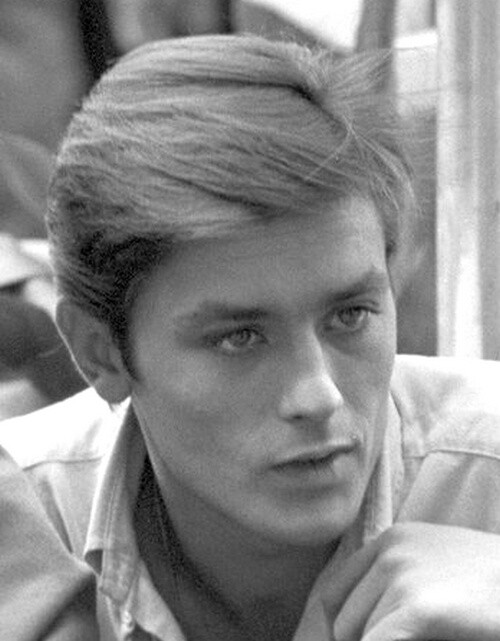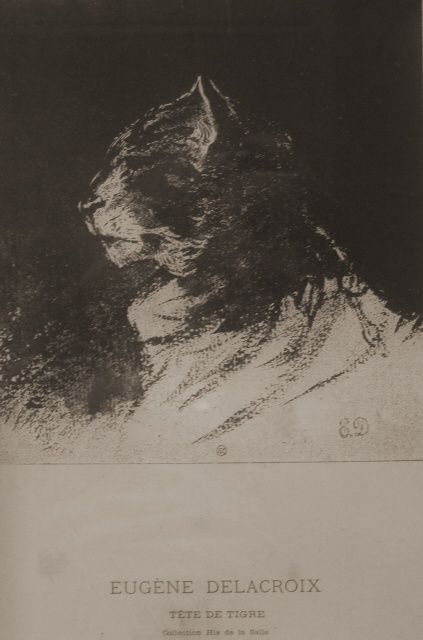Who is Alain Delon
Alain Fabien Maurice Marcel Delon, born on November 8, 1935, is a renowned French actor, filmmaker, and entrepreneur. During the 1960s, 1970s, and 1980s, he emerged as one of Europe's most prominent actors and iconic symbols of screen charisma. In 1985, he received the prestigious César Award for Best Actor for his outstanding performance in the film "Notre histoire" (1984). Further, in 1991, he was honored with France's Legion of Honour. At the 45th Berlin International Film Festival, he was awarded the Honorary Golden Bear, and at the 2019 Cannes Film Festival, he was bestowed with the Honorary Palme d'Or.
Delon garnered critical acclaim for his memorable roles in films such as "Purple Noon" (1960), "Rocco and His Brothers" (1960), "L'Eclisse" (1962), "The Leopard" (1963), "Le Samouraï" (1967), "La Piscine" (1969), "Le Cercle Rouge" (1970), "Un flic" (1972), and "Monsieur Klein" (1976). Throughout his illustrious career, Delon collaborated with renowned directors including Luchino Visconti, Jean-Luc Godard, Jean-Pierre Melville, Michelangelo Antonioni, and Louis Malle. In addition to his acting career, Delon also made a mark as a singer, recording the popular duet "Paroles, paroles" (1973) with Dalida. In 1999, he acquired Swiss citizenship.
 Alain Delon in 1960, via Wikipedia.
Alain Delon in 1960, via Wikipedia.
An $8.8 million collection
The art collection of Alain Delon, the iconic film star of the 1960s and 1970s and one of the most enduring sex symbols in cinematic history, went under the hammer at Bonhams Cornette de Saint Cyr in Paris. The auction, which featured 83 lots (and saw 98 percent of them find new owners), exceeded all expectations by fetching a grand total of 8 million euros, far surpassing the initial pre-sale estimate of 4 million euros. The auction hall was brimming with enthusiastic buyers vying for the prestigious pieces passionately amassed by Alain Delon.
Born in 1935, Delon was not only a celebrated actor but also a discerning and devoted art collector. While his acting career began in the late 1950s, it was during the 1960s and 1970s that he achieved remarkable success in films like "Rocco and His Brothers" (1960) and "The Leopard" (1963), culminating in "Notre Histoire" (1984), for which he clinched the César Award for Best Actor. Renowned not only for his striking looks but also for his remarkable acting prowess, Delon collaborated with some of the most distinguished directors of his era, including Luchino Visconti, Jean-Pierre Melville, Louis Malle, and Jean-Luc Godard. His contributions to cinema were recognized with the Legion of Honor in 1991, and he received both an honorary Golden Bear and an honorary Palme d’Or.
Delon's art collection is notably diverse, primarily focusing on modern art but also encompassing a few pieces from the old masters. The standout lot was Raoul Dufy's (1877-1953) painting "La baie de Sainte-Adresse" from 1906, which achieved a remarkable sale price of 1,016,400 euros, surpassing its initial estimate of 600-800,000 euros. Another notable mention is Eugène Delacroix's (1798-1863) "Arabian Horse Tied to a Stake," which fetched €775,100, more than doubling the minimum estimate. Three exceptional works by Rembrandt Bugatti (1884-1916) were also noteworthy, including a bronze statuette of a crouching Lioness that captured the beauty and vulnerability of animals (estimated at 250,000-300,000 euros, sold for €533,800), along with a Panther and a Lion, which sold for €508,400 and €483,000, respectively. A Landscape (1914-1915) by Albert Gleizes (1881-1953), reflecting the new Cubist tendencies embraced by the artist after the publication of his work "Du Cubisme" in 1912, achieved a sale price of €356,000. Two works by Jean-François Millet (1814-1875) also commanded remarkable prices: "Paysannes au repos" sold for €241,700, and "La Laitière normande," a charcoal drawing estimated between €100,000 and €150,000, sold for €216,300. Additionally, a view of Genoa ("Gênes, un bout de la ville et les Apennins"), a delicate oil on canvas from 1834 by Camille Corot (1796-1875), sold for 229,000 euros, doubling the minimum estimate.
Delon's collection also featured several Italian artists. A small pen and watercolor drawing by Domenico Beccafumi, depicting St. Anthony on one side and Kneeling Women on the reverse, achieved a sale price of €241,700, four times the lowest estimate. The auction also featured a drawing by Veronese (depicting St. George and the dragon), which sold for €82,950, a drawing of Christ on the Cross by Guercino, which sold for €140,100, a drawing by Grechetto ("The Family of Darius in front of Alexander"), which sold for €95,560, and a Study of Two Orientals by Giovanni Battista Tiepolo, which sold for €35,840.
Arnaud Cornette de Saint Cyr, President of Bonhams Cornette de Saint Cyr in Paris, remarked, "Alain Delon's collection, admired from Hong Kong to New York to Paris, has achieved unprecedented success, grossing 8 million euros, more than double its lowest estimate. Alain Delon is a living legend of cinema, and his discerning taste and artistic eye have garnered acclaim worldwide. It was a great honor for Bonhams Cornette de Saint Cyr to present this sublime collection, and it's no surprise that it drew such passionate bidding at this extraordinary auction."

Some artists from the collection
Raoul Dufy
Raoul Dufy (pronounced as [ʁa.ul dy.fi]; June 3, 1877 – March 23, 1953) was a prominent French Fauvist artist. He cultivated a vibrant and ornamental artistic approach that gained popularity in ceramics and textile patterns, along with decorative plans for public structures. His work is renowned for portraying outdoor social gatherings. Additionally, he possessed skills as a sketch artist, printmaker, book illustrator, stage designer, furniture designer, and urban planner.
Eugène Delacroix
Ferdinand Victor Eugène Delacroix (April 26, 1798 – August 13, 1863) was a renowned French Romantic artist who was acclaimed from the very beginning of his career as the leading figure of the French Romantic artistic movement. In contrast to his primary rival, Ingres, who adhered to Neoclassical ideals of perfectionism, Delacroix drew inspiration from the works of Rubens and artists from the Venetian Renaissance. He emphasized the use of vibrant colors and dynamic movement in his art, rather than focusing on precise outlines and meticulously modeled forms.
Rembrandt Bugatti
Rembrandt Bugatti (Milan, October 16, 1884 – Paris, January 8, 1916) was an Italian sculptor. His bronze sculpture "Sacred Baboon Hamadryas," from 1909-1910 and originally from the Rothschild collection, was sold at auction for 2.56 million dollars. In 2014, the city of Berlin dedicated an exhibition to him, featuring over eighty sculptures at the Alte Nationalgalerie.
Albert Gleizes
Albert Gleizes (December 8, 1881 – June 23, 1953) was a French artist, philosopher, and theoretician who proclaimed himself as one of the pioneers of Cubism, leaving a significant mark on the School of Paris.
Jean-François Millet
Jean-François Millet (October 4, 1814 – January 20, 1875) was a prominent French artist who played a foundational role in establishing the Barbizon school in the rural regions of France. Millet is celebrated for his depictions of peasant farmers and is categorized within the Realism art movement. As his career progressed, he developed a growing interest in creating pure landscape paintings. While he is primarily renowned for his oil paintings, Millet also gained recognition for his work in pastels, Conté crayon drawings, and etchings.
Camille Corot
Jean-Baptiste-Camille Corot, often referred to simply as Camille Corot, lived from July 16, 1796, to February 22, 1875. He was a renowned French artist known for his expertise in both landscape and portrait painting, along with his skills as a printmaker specializing in etching. As a significant figure in the realm of landscape painting, his extensive body of work simultaneously paid homage to the Neo-Classical tradition while foreshadowing the plein-air techniques that would later become a hallmark of Impressionism.
Veronese
Paolo Caliari, born in 1528 and passing away on April 19, 1588, is renowned as Paolo Veronese. He was an Italian Renaissance painter who was primarily based in Venice. Paolo Veronese gained fame for his monumental history paintings, particularly those depicting religious and mythological themes, exemplified by works like "The Wedding at Cana" (1563) and "The Feast in the House of Levi" (1573). Alongside Titian, who was a generation older, and Tintoretto, who was a decade his senior, Veronese formed part of the triumvirate that exerted significant influence over Venetian painting during the 16th century Cinquecento period and the Late Renaissance. Celebrated for his mastery of color, Paolo Veronese transitioned from an earlier Mannerist style to develop a more naturalistic approach to painting, under the influence of Titian.
Guercino
Giovanni Francesco Barbieri, born on February 8, 1591, and passing away on December 22, 1666, is more commonly recognized as (il) Guercino. He was a prominent Italian Baroque painter and sketch artist hailing from Cento in the Emilia region, known for his artistic contributions in both Rome and Bologna. Guercino's early style was characterized by robust naturalism, which contrasts with the classical balance evident in his later works. His extensive collection of drawings is particularly renowned for its luminous quality and vibrant artistic expression.
Grechetto
Giovanni Benedetto Castiglione, baptized on March 23, 1609, and passing away on May 5, 1664, was a prominent Italian Baroque artist, printmaker, and sketch artist associated with the Genoese school. Today, he is primarily renowned for his remarkable etchings and for pioneering the innovative printmaking method known as monotyping. In Italy, he was often referred to as Il Grechetto, while in France, he was recognized as Le Benédette.
Giovanni Battista Tiepolo
Giovanni Battista Tiepolo, born on March 5, 1696, and passing away on March 27, 1770, was an Italian artist and printmaker hailing from the Republic of Venice. He was alternatively known as Giambattista or Gianbattista Tiepolo. Tiepolo was renowned for his contributions to the Rococo style of painting and is regarded as a significant figure within the 18th-century Venetian school of art. His artistic output was prolific, spanning not just across Italy but also extending to Germany and Spain.



 Selena Mattei
Selena Mattei












